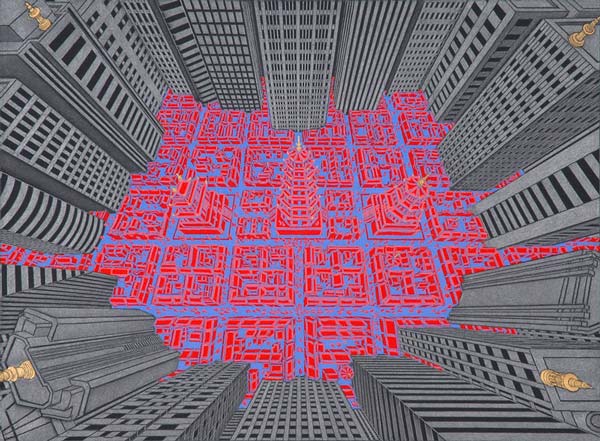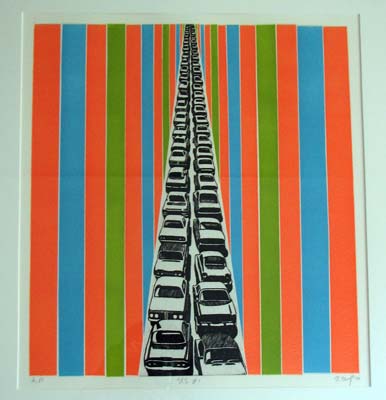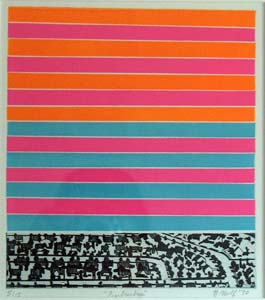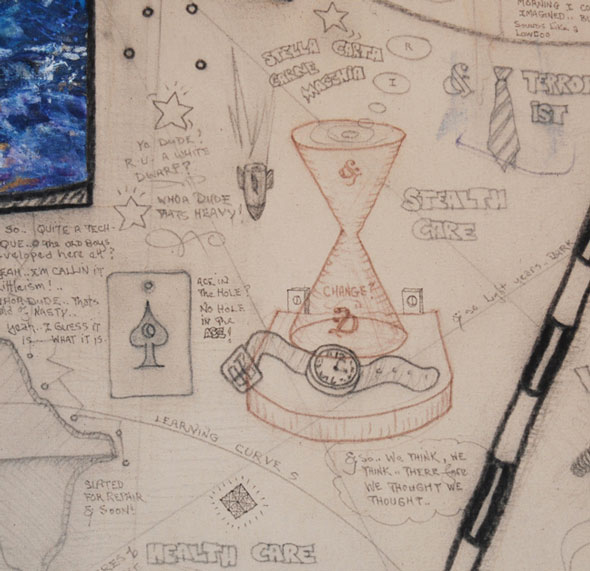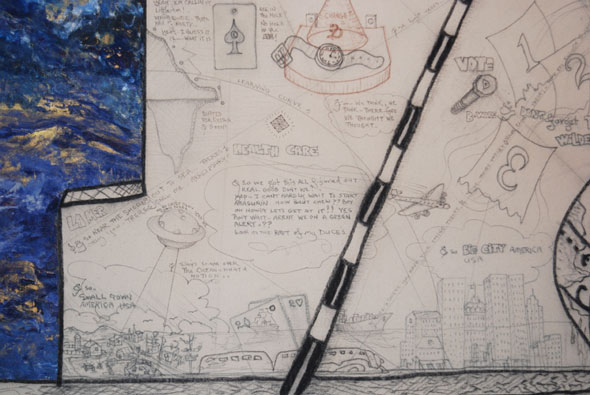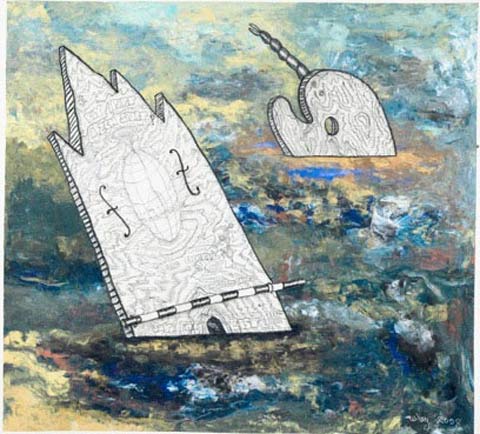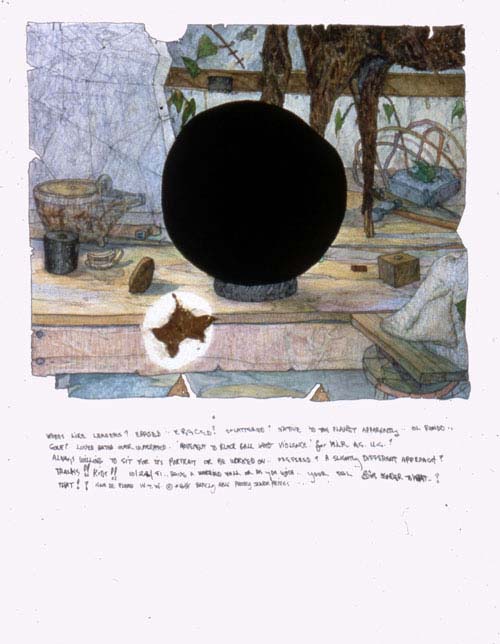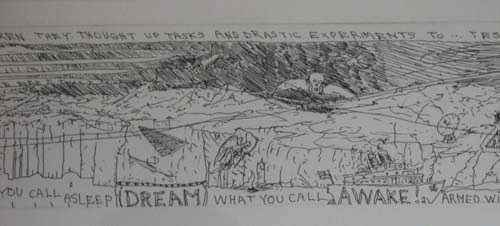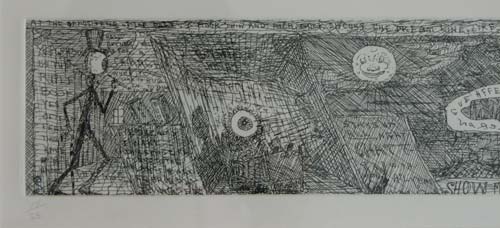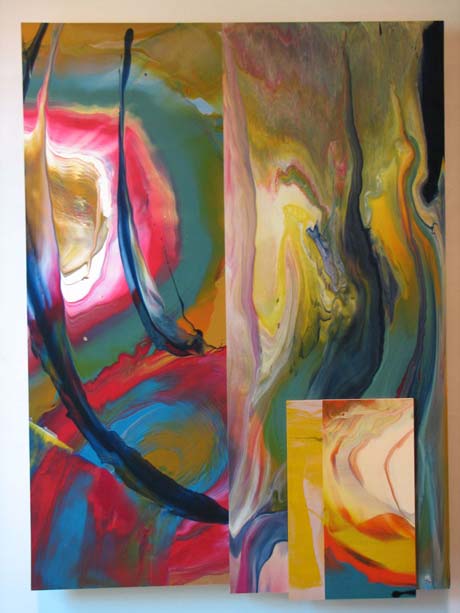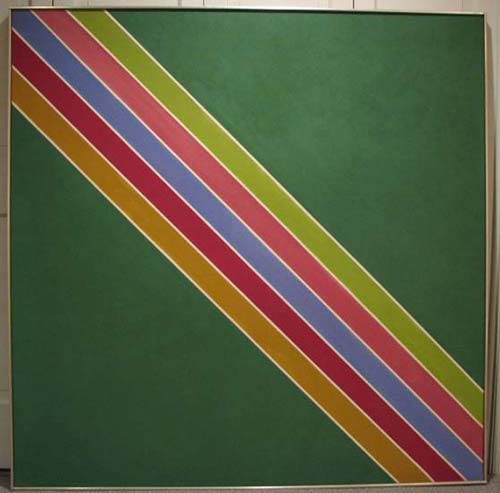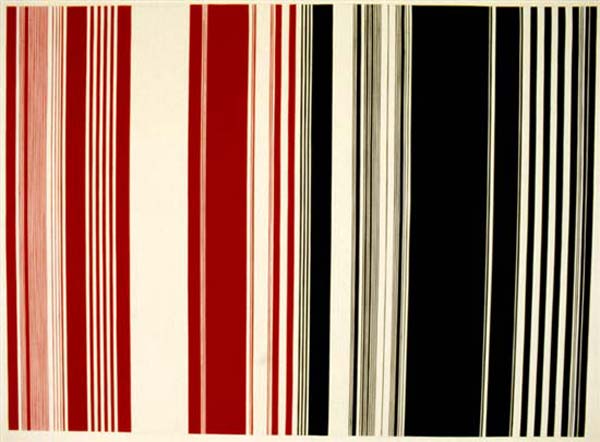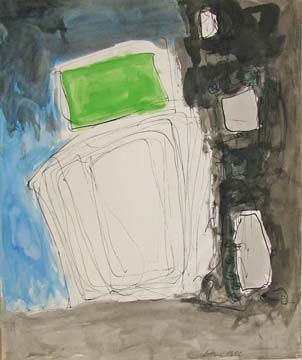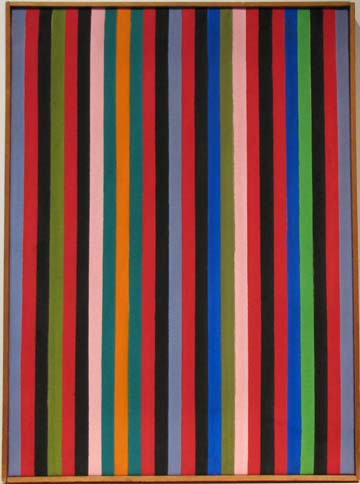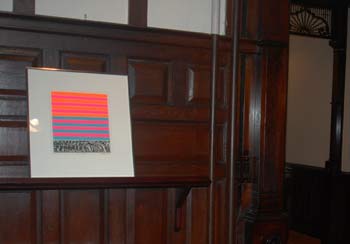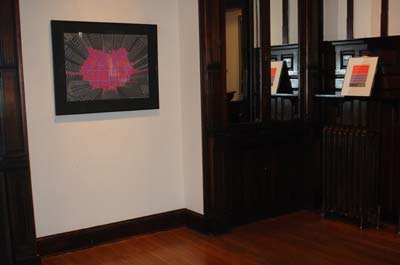|

Press Release
The summer show at the Marsha Mateyka Gallery focuses on the works of four major gallery
artists---Gene Davis, Sam Gilliam, William T. Wiley, and Nancy Wolf. Each artist is
represented by early and more recent work which offers the opportunity, in each case, to compare
influences and styles over several decades.
The renowned Color Field artist, Gene Davis is represented by four works that span his
career. The earliest is an ink wash drawing from
1952; it
is one of the very first
works he exhibited. Its organic forms reflect the influence of major abstract
expressionist artists of the period. An untitled watercolor from
1956
shows Gene Davis’
style shifting toward more geometric forms, which are a precursor to his radical embrace
of the all vertical stripe format. The small, dynamic painting from
1963
shows the
artist’s signature style--the vertical stripe, even width, edge to edge composition. Over
the next 20 years, Davis explored numerous variations of the color stripe format. The large
scale
“Concord” from 1982
is a late work, completed several years before the artist’s premature
death. The Marsha Mateyka Gallery has represented the Estate of Gene Davis since 1996.
Internationally celebrated artist, Sam Gilliam is Washington’s best known living artist. He
is represented in this exhibition by two paintings.
“Tempo”, 1965
is a rare, early work
which is one of a small series of paintings influenced by Washington Color School luminaries
of the period, Ken Noland, Morris Louis and Tom Downing. Sam Gilliam then went on to
radical departures from the traditional stretched painting with huge installations of color
soaked, draped canvases. The artist has continued to merge a fearless use of color with
innovations exploring the borders between painting and sculpture. The second work in this
exhibition is
“Repeating Green Slice”, 2008
, a constructed, abstract painting on birch panels
that reveals his exceptional use of color. This work defines while also defying the
confines of the rectangle. The Marsha Mateyka Gallery has represented the work of
Sam Gilliam since 1998.
A major American artist and West Coast legend, William T. Wiley is well known for his
paintings, watercolors, prints and drawings that mix text with images and social comment with
humor. His work was the subject of a major career retrospective exhibition at the
Smithsonian American Art Museum in 2009. In the current exhibition, he is represented
by a watercolor, a painting and two early prints. The watercolor,
“Words Like Leaders”, 1981
, is an image derived from a shelf in his studio containing a large black ball and
various other objects. The text beneath reveals Wiley’s concern that leaders like
words can be too easily erased through violence. It includes the message, “Movement to
blackball violence for M.L.K. as us”. Two etchings from
1983 titled “Show me the line
between…”
question the difference between the states of dream and reality. A recent
painting,
“Glacier with My Grain”, 2008
, again uses the Socratic Method, word play and humor
to express concern about global warming. The Marsha Mateyka Gallery has represented the
work of William T. Wiley since 1988.
New York artist, Nancy Wolf is known for her exceptional, meticulous drawings that for
decades have commented on issues concerning the cultural impact of modernization. Two
early color etchings in this exhibition,
“Suburbia” and
“US #1”, both from 1970
, juxtapose
geometric abstraction with contemporary realities of suburban, track housing and highway
congestion. Over the last 40 years, she has observed and communicated the social and
environmental impact of rapid, insensitive modernization of cities in the US, Eastern Europe,
Africa and Asia. The third work in the exhibition is a recent drawing, entitled
“Vertigo
Landscape with Three Temples”, 2007
that reflects the enormous changes in China
which she witnessed firsthand as an artist-in-residence in Hong Kong in 2004. The image
presents a view from the surrounding, suffocating towers of grey, modern buildings looking
down on a vibrant, traditional temple complex. The artist’s passion has never deviated
from this concern for what modernization subsumes in the name of progress. The gallery
has represented Nancy Wolf since 1984.
-----
|
